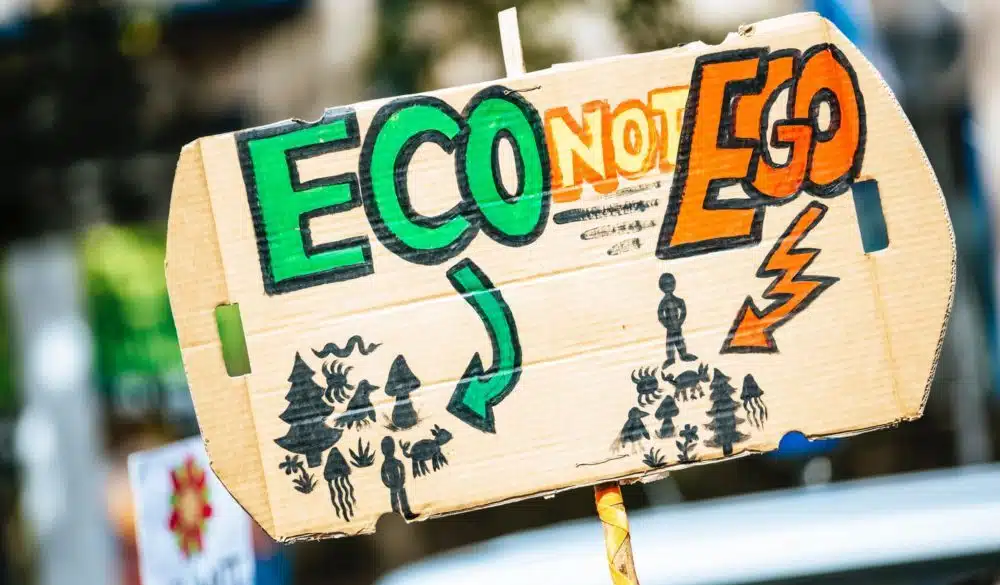Why we should be careful about using the phrase ‘climate refugees’
Posted by IMIX on October 29, 2021The world is descending on Glasgow for COP26, the last-chance saloon to prevent climate change.
Many people are concerned about both waters rising and the impact of the warming climate on refugees. With such a crucial event happening in the UK, it’s tempting to use the opportunity to talk about ‘climate refugees’.
But this phrase, which has been used by everyone from National Geographic to indigenous Pacific islanders, can backfire if not handled carefully.

First, the rhetoric does not necessarily reflect legal rights. In the 70th year of the UN Convention on Refugees, it’s worth noting that the wording of that document does not cover climate change (unsurprising, given the concept didn’t exist in 1951).
Instead, it defines a refugee as ‘a person who is outside his or her country of nationality or habitual residence; has a well-founded fear of being persecuted because of his or her race, religion, nationality, membership of a particular social group or political opinion; and is unable or unwilling to avail him— or herself of the protection of that country, or to return there, for fear of persecution’.
The UN position
There are signs the UN could revisit this definition – the UN Human Rights Committee recently ruled that governments cannot return refugees to countries where their lives might be threatened by climate change. The case hinged on a Pacific islander who applied for protection in New Zealand in 2015, on the grounds that his homeland of the Republic of Kiribati would soon be uninhabitable.
While the UN committee ruled against him, arguing that government intervention could prevent the island from being submerged, it also acknowledged that ‘without robust national and international efforts, the effects of climate change in receiving states may expose individuals to violations of their rights … thereby triggering the non-refoulement obligations of sending states’ (non-refoulement is the principle that no one should be returned to a place where they face irreparable harm or a threat to their life).
In simple terms, the UN Human Rights Committee ruled against the Pacific islander because the risk to his life was not ‘immediate’, but in 10 or so years, when sea waters rise. The effects of global warming can be gradual and indirect, while the legal framework for nations to accept refugees is structured around an immediate and direct threat to life.
Despite the UN signalling that people displaced by climate change may be protected by the Refugee Convention in the future, the fact remains that the conditions of the post-WWII world in which the Convention was created does not cover the environmental-related threats of today.
‘Floods’ and ‘waves’
While there is a risk of confusion if this distinction between rhetoric and a refugee’s legal protections is not made clear, a more worrying aspect of the discussion of ‘climate refugees’ is the rhetoric used around it.
Well-meaning green websites refer to a ‘flood of refugees’, while even more academic arguments can lead to headlines warning of a ‘wave’ of climate refugees.
These activists and environmentalists may not be aware that they are inadvertently using the same images and metaphors used by anti-immigration xenophobes. While we know that no one wants to be uprooted from their home, it’s important to avoid any suggestion that refugees themselves are a negative force – and worth bearing in mind that people have migrated and accommodated migrants throughout human history, while climate change is a threat to humankind itself.
It’s also not accurate. To be a refugee, you must cross an international border. Given that most people affected by climate change are seeking safety within their own country, the trend is more internal displacement.
Don’t forget dictators
A third risk is that, by seeing everything through the green-tinted lens of climate change, idealist activists may unwittingly downplay other forces that lead people to flee their home. A widespread belief that the 1985 famine in Ethiopia was caused by drought – immortalised in Band Aid’s incorrect assertion that ‘there won’t be snow in Africa this Christmas’ – overlooked the Ethiopian government’s policy of land reform and the army’s deliberate burning of crops.
While climate change is undeniably challenging for subsistence farmers in some of the poorest areas of the world, and can fuel unrest, if refugees themselves blame an authoritarian government or local cartel, we should respect their interpretation of events.
As Dr Caroline Zickgraf stated in a House of Lords testimony last year: ‘Migration is always multi-causal. It is always a combination of social, political, economic, environmental and demographic factors.’
So how do we talk about climate change and refugees in a way that advances awareness of both causes?
Avoid using refugees as a threat
Tackling climate change is important even if populations somehow manage to stay put. If individuals do need to leave, on the other hand, it’s unrealistic to think that their specific situation is likely to be resolved by global efforts on climate change in the years that most matter to them. And they don’t deserve to have their plight used as a rhetorical warning or threat.
For that reason, avoid the narrative: ‘We must prevent global warming in order to stop increasing numbers of refugees.’ Be aware of the metaphors used by xenophobes and be vigilant not to repeat them.
Instead, we must tell stories of people who move because they have determined that their home, for a complexity of reasons including climate change, has become unliveable. We must campaign for legislators both at home and in the international community to recognise that. And we must emphasise that climate change should be tackled as a cause in and of itself.
Keep adapting
Ultimately, the term “climate refugee” so far looks insufficient, in terms of accuracy, because it doesn’t capture the plurality of reasons why people leave their homes, or as a legal definition.
We don’t have an alternative set of terminology or suggested addendums to human rights law on hand – yet – if you have thoughts around this, drop us a line!
We hope this post makes you more aware of how we all talk about climate and refugees, that people move because that is what they have always done for a variety of reasons. And the narrative that we must prevent climate change primarily to prevent refugees is not the helpful story it appears to be.
Further reading
https://www.opendemocracy.net/en/stop-peddling-fear-climate-migrants/
https://www.climatechangenews.com/2020/01/29/un-ruling-climate-refugees-gamechanger-climate-action/
https://reliefweb.int/report/india/connecting-dots-climate-change-migration-and-social-protection
https://www.theguardian.com/world/2020/aug/31/how-helpful-is-the-term-climate-refugee
https://www.nytimes.com/interactive/2020/07/23/magazine/climate-migration.html



